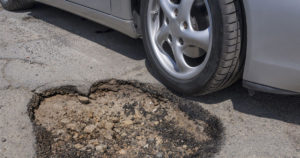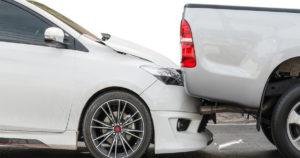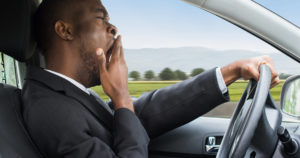South Jersey Car Accident Lawyers
Car accidents are a traumatic experience for anyone, and they often turn the victim’s life upside down. Although these accidents could be nothing more than a coincidence brought about by random, external forces, many accidents occur because of negligence, malice, or ill-will. Car accidents involve carelessness, recklessness, and other issues that require investigation. Because of this, it is important that drivers reach out to a South Jersey car accident lawyer for assistance after an accident.
The worst part of an accident is that drivers may believe they cannot file a lawsuit or do not know how to proceed. Some accident victims may think they cannot afford to hire a lawyer, and others do not know how they will survive in the interim. The information listed here helps car accident victims learn what to do to increase their chances of a successful lawsuit.
Lost loved ones, lost income, and massive expenses make these accidents even worse than they already are. Responding quickly to these accidents is the only way for people to recover and get back to their normal lives. Seeking maximum compensation can also prevent accidents that might hurt other people in the future.
Do Car Accidents Occur Often in South Jersey?
The National Highway Traffic Safety Administration (NHTSA) reports that more than three million people are injured in car accidents in the United States each year. In 2018, traffic accidents across New Jersey caused nearly $800 million in damages and lost productivity, according to the Centers for Disease Control and Prevention (CDC). New Jersey State Police data show 576 fatal accidents in 2023 and 607 fatalities. Accidents in South Jersey involve those in Shore traffic, commuters from Pennsylvania, travelers from Delaware, and all those traveling through New Jersey from New York.
According to the Insurance Institute for Highway Safety, New Jersey drivers travel far fewer miles than those in states such as Pennsylvania and New York, but congested roads in New Jersey make for a high number of accidents and losses. New Jersey is the fourth-smallest state in area, but it is the 11th most-populous state, ranking first in population density. Moreover, New Jersey ranks third in income, meaning more people can afford vehicles. This reality contributes to packed highways and busy rural roads throughout the center of the state.
Because of popular wineries, breweries, and farms across the middle of New Jersey, commercial trucks enter and exit the state frequently. These vehicles contribute to road congestion, and they slow traffic on bridges exiting the state into Delaware, Pennsylvania, or New York.
Urban centers in New Jersey also contribute to congestion and the overall death toll. Camden sits at the center of the Philadelphia-Camden-Wilmington census area, and that city alone accounted for 15 fatal accidents, 15 fatalities, 30 people involved in car accidents, and 10 pedestrians killed in 2019.
Many tourists come to shore towns such as Ocean City, Atlantic City, and Cape May in the spring and summer, bringing even more congestion than normal. Drivers to the area might cause accidents before reaching their destinations, and they might cause accidents in these busy tourist sites. Because the roadways of South Jersey may be problematic for drivers, remaining diligent behind the wheel is the only way to stay safe.
Are There Specific Issues Facing South Jersey Drivers?
Drivers in South Jersey often do not realize all the problems that face them when passing through the area. There are quite a few things for which drivers should be aware, including the following issues:
Major highways. Major highways such as Interstate 295 and the New Jersey Turnpike pass through South Jersey. U.S. Highways such as 322, 30, 40, and 9 allow drivers to reach the Shore or travel up north. The Garden State Parkway runs parallel to U.S. 9, and travelers use Route NJ 49 to return to Pennsylvania from the Shore.
Additionally, the New Jersey Turnpike, Garden State Parkway, and Route 130 are among the six most dangerous roads in New Jersey. Motorists must be ready to drive on fast highways with reckless drivers, and they should slow down the moment they exit the highway for a surface street. Drivers are also advised to slow down because of enhanced New Jersey State Police presence on these roads.
Rural roads. New Jersey takes its nickname, The Garden State, from the many farms dotting the landscape. Those who have not driven through the state often do not realize that the region contains large rural areas with many country routes. Rural roads in the state often take drivers by surprise, and these roads may not have proper markings; have very little lighting; or might have walkers, bicyclists, or motorcyclists traveling on them.
Rural roads often invite inattention because drivers believe there are not many people traveling on these roads. However, drivers in New Jersey must realize that a busy highway such as NJ 55 dumps drivers onto rural roads every day. Moreover, these roads have little to no lighting at busy intersections, and drivers may find it difficult to judge distances in these situations.
Although the State of New Jersey ranks first in overall rural road conditions, rural roads are one of the most common places where a single-vehicle accident can occur. Although less than half of America’s traffic occupies these roads, they account for more than 50 percent of America’s car accidents.
Untreated roads. Snow and ice present an issue in New Jersey every year as temperatures drop and precipitation freezes. Although drivers in the area might see snowplows and salt treatment trucks, that does not mean that all the roads in the state are treated when snow falls. Drivers should not attempt to travel if they cannot pull onto a treated or cleared road. Drivers should turn around and go home if they find major roads that are not treated properly, or a driver might use an alternate route when presented with roads that are clearly not safe for driving.
Even treated roads can harbor patches of ice that are almost impossible to see. Drivers may believe they are safe, speed up, and hit a patch of ice that sends them skidding off the road or into another vehicle. These issues simply become worse when the driver is on a rural road.
Bridge traffic. Bridge traffic in New Jersey can prove to be dangerous for anyone. Drivers must slow down as much as possible on bridges. These structures support millions of tons of weight every year, and speeding across them is dangerous for the driver, other motorists, and the bridge. In addition, some people are nervous about crossing bridges, and they do not want to even change lanes. For everyone’s safety, drivers should be especially careful until off the bridge and not make any sudden moves.
Suburban traffic. Suburban traffic is more of a problem that most people realize. Suburban traffic backs up onto surface streets, near highway ramps, and on highways. Drivers in the suburbs must abide by lower posted speed limits even if they believe certain roads allow them to drive faster. Rear-end accidents often occur in these situations because many drivers are not paying attention and do not realize traffic is backing up.
School traffic is another issue that drivers may not take into consideration. Schools throughout New Jersey were often established at or near the turn of the 20th century, and these buildings may not face major roads. Drivers often do not even realize they are near large schools with parents pulling into a drop-off lane, several buses, and walking children. Drivers must be aware of the signs of school traffic, look for school zone signs, and never make erratic maneuvers near these facilities.
Severe weather. Hurricanes can strike in the late summer and fall, high winds blow in from the mountains of Eastern Pennsylvania, and overcast skies reduce visibility. Drivers must slow down when driving in high winds because their vehicles could be pushed out of the lane or into another vehicle. Large vehicles could tip over in these conditions, and any driver could experience a rollover if they hit uneven pavement or take a sharp turn too quickly.
Rainfall creates slick spots or puddles on the road that make driving more dangerous. Rainfall also obscures the driver’s view; pulling over may be the only appropriate thing to do.
Boat carriers. Although the Jersey Shore is a lovely place to vacation, it is also home to many boaters who use boat carriers. While drivers may believe that driving near a boat carrier is no different from driving near a large truck, this perception is not accurate. Even very large boats connect to a hauler with a single hitch, and it is easy for the driver to lose control of the boat. Motorists should never linger near these vehicles, and the local authorities should be alerted if the boat begins to sway.
What are the Common Types of Car Accidents?
Depending on the type of accident that occurred and the circumstances surrounding it, car accident victims may suffer various injuries ranging from minor to serious, such as amputations, brain injuries, burns, head and neck injuries, lacerations, paralysis, and permanent disfigurement. Victims suffering injuries from a car accident because of someone else’s negligence should reach out to an experienced car accident lawyer. The lawyer should be able to help victims obtain the compensation they deserve. Some of the most common types of car accidents include the following:
Head-on collisions. Head-on collisions occur when one vehicle strikes another directly, and this often occurs during wrong-way crashes, when confused drivers do not know where they are or when visibility is so low that drivers cannot see. These are the most severe of all accidents, and they are easier to avoid when drivers obey road signs, drive only when fully alert, and pull over when they cannot see.
Hit and run accidents. Hit and run accidents occur in two major forms: stopping and then leaving or driving past the accident. Many hit and run accidents occur when the offending driver does not stop at all. An eyewitness might have seen their vehicle or taken pictures. Other accidents involve an at-fault driver who stops and realizes they will be cited for driving without insurance, driving recklessly, or worse. They tend to leave the scene, and accident victims should attempt to get their name and insurance information or take pictures of them and their vehicle.
Although the local authorities may cite this driver for leaving the scene of an accident, that does not prevent victims from filing a lawsuit to recover damages for their injuries, pain, and/or suffering.
Multiple vehicle accidents. Multiple vehicle accidents occur after a rear-end accident or when a large truck jackknifes. Drivers could be at the front, middle, or back of these accidents. Injuries vary depending on the speeds involved and the location of the victim, and several insurance claims may result. In multiple vehicle accidents, victims and their lawyers must determine who is to blame and who should be sued. This process can take longer than a traditional car accident lawsuit in which it is obvious which driver is at fault.
Rear-end collisions. These accidents often occur as a result of inattention, especially from those using cell phones and teenagers with little to no experience on the road. Information from Safer America shows that the risk of a fatal accident is much higher when a teen driver is behind the wheel, twice as much for those aged 16 to 17 as those 18 to 29. Rear-end accidents also occur in intersections when drivers do not slow down quickly enough, in heavy stop-start traffic, or when visibility is extremely low. Senior drivers may not have the reflexes of their younger counterparts, and they tend to make up almost 20 percent of car accident deaths and approximately 10 percent of all injuries.
Side-impact collisions. These collisions are known as T-bone accidents because one car strikes perpendicular to the other. A side-impact collision is extremely violent, as doors may crumple, many older vehicles do not have side-impact airbags, and the speed of the crash may cause yet more devastation. Even though the NHTSA changed its rules, stating that side-impact airbag protection should serve victims up to 33.5 miles per hour, the average speed limit in New Jersey is 62 miles per hour. Therefore, drivers cannot assume that their vehicle will protect them from all accidents.
Sideswipe collisions. Sideswipe collisions may not stop either vehicle, but they can force a vehicle off the road, render the vehicle inoperable, or cause a multiple vehicle accident. Sideswipes can occur when drivers change lanes and strike another vehicle. Some drivers incur injuries because they are in the at-fault driver’s blind spot. Accordingly, drivers should always check their blind spots before changing lanes. Sudden maneuvers could startle other motorists, and their correction could lead to an accident.
Rideshare accidents. Car accidents involving ride-sharing vehicles can be complex because the drivers of these vehicles must keep their own insurance, since their employer is not responsible unless the driver has a passenger inside the vehicle. Therefore, accident victims must file against the driver’s insurance or file suit if there are no passengers. When passengers are present, companies such as Uber or Lyft can provide up to $1 million in coverage. Motorists should not contact the ride-sharing service when an accident occurs. Instead, a car accident lawyer should be contacted for assistance first.
What are Common Causes of Car Accidents?
Sometimes, car accidents are caused by factors out of a driver’s control. However, most motor vehicle accidents are caused by driver error, and some of the most common car accidents include the following behaviors or factors:
Aggressive driving. Aggressive drivers endanger the lives of themselves and those around them by failing to follow traffic laws. Aggressive driving often escalates to road rage, according to the NHTSA. Road rage refers to behaviors such as hitting another vehicle purposely, running another vehicle off the road, engaging in a physical altercation, or using weapons against another driver.
Auto defects. Sometimes, car accidents are caused by auto defects, including airbag malfunctions, broken accelerator controls, steering breakdowns, and wiring system issues. Although the NHTSA recalls vehicles that have defects or do not meet federal standards, buyers may be unaware of a recall until an accident occurs.
Distracted driving. Approximately 3,522 people suffered fatal injuries in distracted driving accidents in 2021, according to the NHTSA. Because distracted driving is one of the most underreported causes of car accidents, it is suspected that those numbers are much higher. Cell phones, infotainment systems, and other emerging technologies increase the risk of distracted driving car crashes.
Drowsy driving. Drowsy driving can be just as dangerous as drunk driving because drowsy drivers display the same performance impairments as drunk drivers. Missing two or three hours of sleep a night quadruples one’s risk of getting in a car accident, according to AAA. The NHTSA reports that at least 100,000 police-reported accidents per year are due to drowsy driving.
Drunk/impaired driving. Driving under the influence of alcohol or drugs causes delayed reaction time, impaired judgment, and decreased alertness. According to the CDC, approximately 29 people suffer fatal injuries each day in the United States because of alcohol-related driving accidents and 40 percent of traffic victims are people other than the drunk driver.
Poor weather conditions. The Federal Highway Administration reports that more than 1.5 million highway crashes each year are attributable to poor weather conditions. Snow, sleet, rain, fog, and high winds are just a few examples of poor weather conditions that can lead to car accidents.
Speeding. Speeding is a common cause of accidents, especially among teenagers. Speeding accidents can cause catastrophic injuries because of the high rate of speed and result in heavy impact.
Can I Receive Compensation After Suffering Injuries in a Car Accident?
When victims or families are eligible for compensation, they do not sue for a round-number award without any justification. Lawyers must calculate, to the penny, the damages incurred by the victim or their family. Victims must pay for their medical expenses, recovery, lost income, or lost earning potential. For example, employers can calculate how much the victim would make if the accident did not occur. That statement goes on the record and adds value to the claim. The same is true when a medical expert writes an estimate for the recovery of the victim.
Lawyers also consider the value of the victim’s or family’s pain and suffering. Victims lose relationships, experience a reduced quality of life, and undergo immense emotional strain. The bereaved grieve the loss of a loved one, must replace their income, and do not have the support that person provided.
Moreover, families that must bury a loved one and grieve their death are due funeral expenses and all the costs associated with probating the deceased’s will. Although families can file a wrongful death lawsuit, direct dependents of the decedent must work with a lawyer. Spouses, children, dependent parents or siblings, or the administrator of the will qualify to bring this claim before the court.
Why Does My Family Need to Retain a Lawyer?
Retaining a lawyer helps the family recover and keep its affairs in order. Lawyers understand how to investigate car accidents, file lawsuits, negotiate settlements, and argue cases in court. Victims are often not allowed to represent themselves pro se, as that may cause delays in the court system. Additionally, victims or the bereaved do not pay a lawyer until a settlement or judgment is reached.
A lawyer also keeps in contact with all necessary parties, as these cases can be quite complex. Although the lawyer may need to file a claim against an insurance company for lack of payment, the lawyer may also need to sue an offending driver, manufacturer of a defective vehicle, or corporation in charge of that vehicle.
Read our car accident blogs here.
South Jersey Car Accident Lawyers at the D’Amato Law Firm Represent Victims Injured in Car Accidents
If you were injured in a car accident because of someone else’s negligence, contact the South Jersey car accident lawyers at the D’Amato Law Firm. Collectively, we have represented car accident victims for over 50 years. We take the time to build a strong case and see that our clients are fully and justly compensated for their injuries. Call us today at 609-926-3300 or contact us online for a free consultation. Located in Egg Harbor Township, New Jersey, we serve clients throughout South Jersey, including Atlantic City, Linwood, Galloway Township, Cape May, Vineland, Millville, Bridgeton, Ocean City, and Woodbury.

